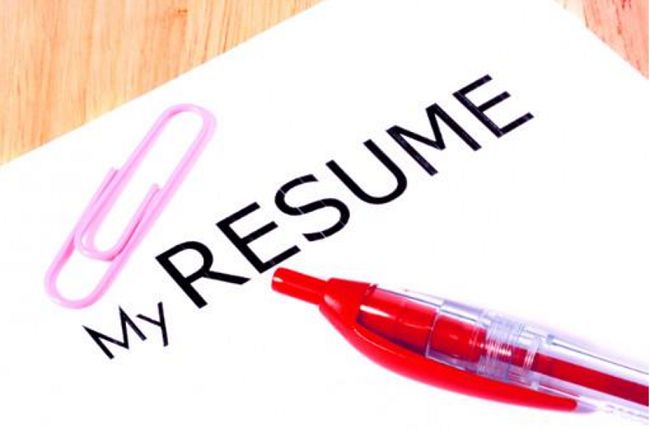Resume & Cover Letter Writing: Complete Guide to Getting Hired
Writing a strong resume and cover letter is one of the most important steps in achieving your dream job. These two documents serve as your first introduction to potential employers and help them understand your skills, experience, and professional background before meeting you. A well-crafted resume presents your qualifications clearly, while a powerful cover letter expresses your motivation and personality. Together, they create a positive impression that can open doors to new career opportunities.

Why Your Resume and Cover Letter Matter
Your resume and cover letter act as your personal marketing tools. A resume highlights your professional achievements, work experience, and education, while a cover letter provides insight into who you are and why you’re passionate about the role. They not only reflect your professionalism but also help employers decide if you’re the right fit for the company. Without strong, well-organized documents, even the most qualified candidates might miss their chance to stand out.
Understanding the Purpose of a Resume
A resume is more than just a summary of your work history it’s a reflection of your career journey. The goal of your resume is to get you an interview, not the job itself. It should showcase your accomplishments, strengths, and value in a concise, easy-to-read format. Instead of simply listing job duties, focus on what you achieved in each role. For instance, instead of saying “handled customer service,” you could write “successfully resolved 95% of customer inquiries within 24 hours.”
This results-oriented approach captures the attention of hiring managers and shows that you deliver real impact.
Choosing the Right Resume Format
There are several types of resume formats, and each serves a different purpose. A chronological resume lists your experience from the most recent to the oldest, making it perfect for those with a consistent work history. A functional resume focuses more on your skills and abilities rather than your job titles or dates, which works best for freelancers or those changing careers. The combination format merges both styles, highlighting your strongest skills alongside your work experience.
Whichever format you choose, make sure it is organized, professional, and suitable for your industry.
Key Elements of a Professional Resume

Every strong resume includes specific sections that showcase your qualifications. Start with your full name and contact information, including your phone number, professional email, and LinkedIn profile. Follow that with a professional summary a short paragraph highlighting your most valuable skills and experience. Next, include sections for your skills, work experience, education, and achievements. Optional areas like awards, volunteer experience, or language skills can also help your resume stand out.
Consistency in formatting is key, so use the same font, size, and spacing throughout your document.
Writing a Compelling Professional Summary
Your professional summary is your introduction to the employer. It should be concise no more than three to five sentences and focused on your strengths. Use this section to briefly describe your career background, main skills, and what you can contribute to the company. Instead of writing a vague objective like “seeking a position to grow my career,” write something impactful such as “results-driven sales professional with seven years of experience increasing revenue through customer relationship management and data-driven strategies.”
A strong summary gives the reader a quick understanding of your professional identity.
Making Your Resume Action-Oriented
To make your resume more dynamic and effective, use action verbs such as managed, created, improved, developed, or achieved. These words make your accomplishments sound strong and confident. For example, “developed a new social media strategy that increased engagement by 40%” sounds more impressive than “responsible for managing social media accounts.”
Always focus on results numbers, percentages, or other measurable achievements can make a big difference.
Tailoring Your Resume for Every Job
One of the biggest mistakes job seekers make is sending the same resume to every employer. Every job is unique, so your resume should reflect that. Read each job description carefully and identify the keywords and skills that the employer is looking for. Then, adjust your resume to highlight those areas. This not only shows the employer that you’ve paid attention to their requirements but also helps your application pass through applicant tracking systems (ATS) that scan for specific keywords.
Keeping the Design Clean and Professional
While content is king, design matters too. Your resume should be visually appealing yet simple. Use professional fonts such as Arial, Calibri, or Helvetica, and avoid using too many colors or graphic elements. Keep margins wide and text neatly aligned to create balance. Unless you’re applying for a creative position, stick to a clean and traditional design. Always save your resume as a PDF before sending it this ensures that your formatting stays consistent on any device or computer.
The Role of the Cover Letter
A cover letter is your chance to communicate directly with the employer and express your enthusiasm for the job. While your resume lists what you’ve done, your cover letter explains why you did it and why it matters. Begin by addressing the hiring manager by name if possible. In your introduction, mention the position you’re applying for and how you found it. In the next paragraph, highlight how your experience aligns with the company’s goals and what unique value you bring. Finally, close by thanking them for their time and expressing your eagerness to discuss the position further.
Keep your cover letter brief ideally one page and always customize it for each application.
Avoiding Common Mistakes
Even the most talented candidates can lose opportunities due to simple mistakes. Always proofread your resume and cover letter to eliminate grammar or spelling errors. Avoid using informal language or unprofessional email addresses. Don’t include irrelevant personal information like age, religion, or marital status unless specifically requested. Also, never exaggerate your experience employers value honesty and transparency. A clean, truthful, and error-free application always stands out.
Updating and Maintaining Your Resume
Your resume is a living document, and it should evolve as your career grows. Update it every few months to include new projects, promotions, or certifications. Keeping it current ensures that you’re always prepared when new opportunities arise. It also prevents the stress of trying to remember your accomplishments at the last minute.

Conclusion
Your resume and cover letter are more than just job application tools—they are reflections of your professional journey and personal brand. They tell employers who you are, what you’ve achieved, and how you can contribute to their organization. Take the time to craft them carefully, focusing on clarity, relevance, and professionalism. A strong resume gets you noticed, while a thoughtful cover letter helps you connect emotionally with the employer. Together, they can turn your job search into a success story and move you one step closer to your career goals.




